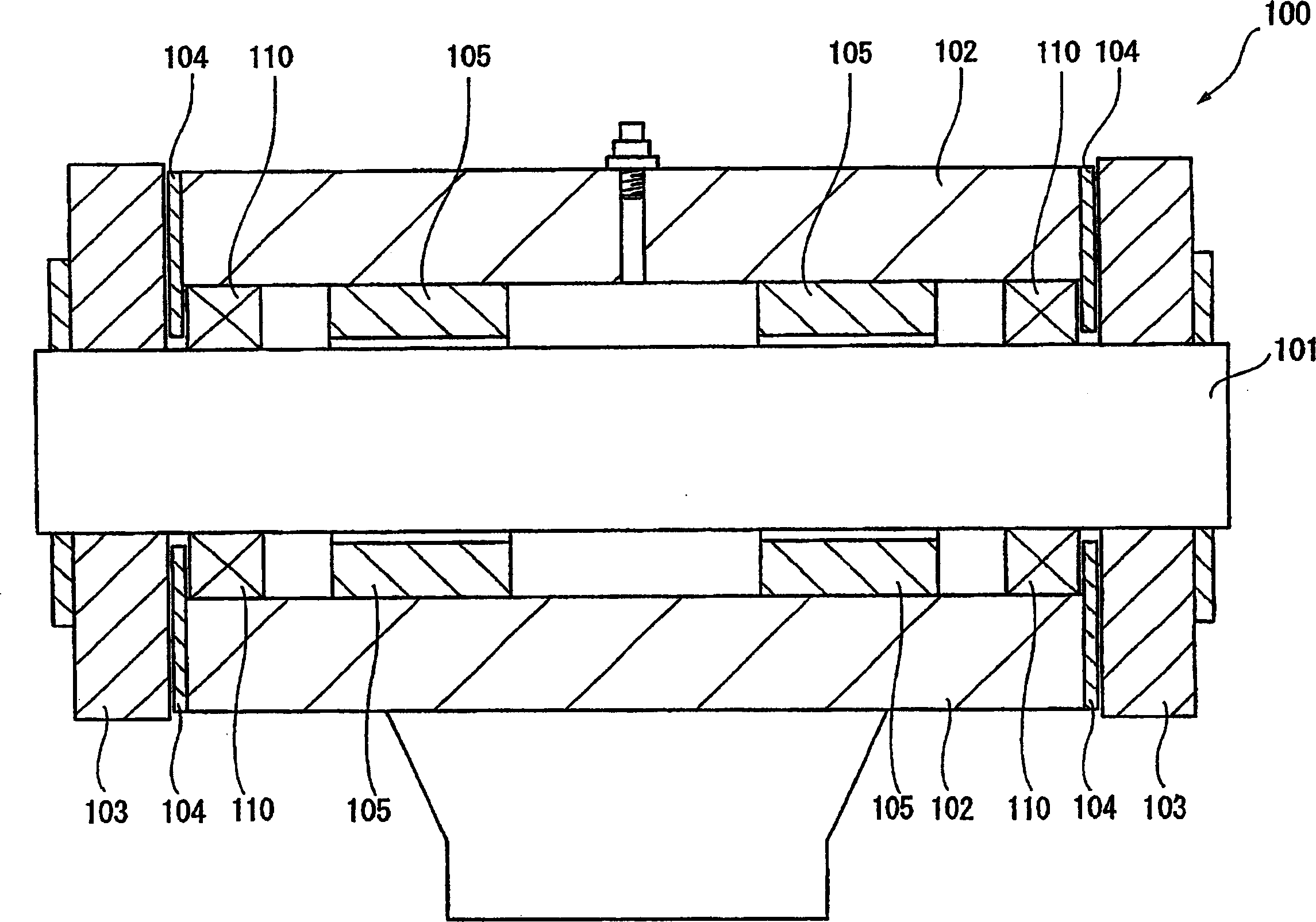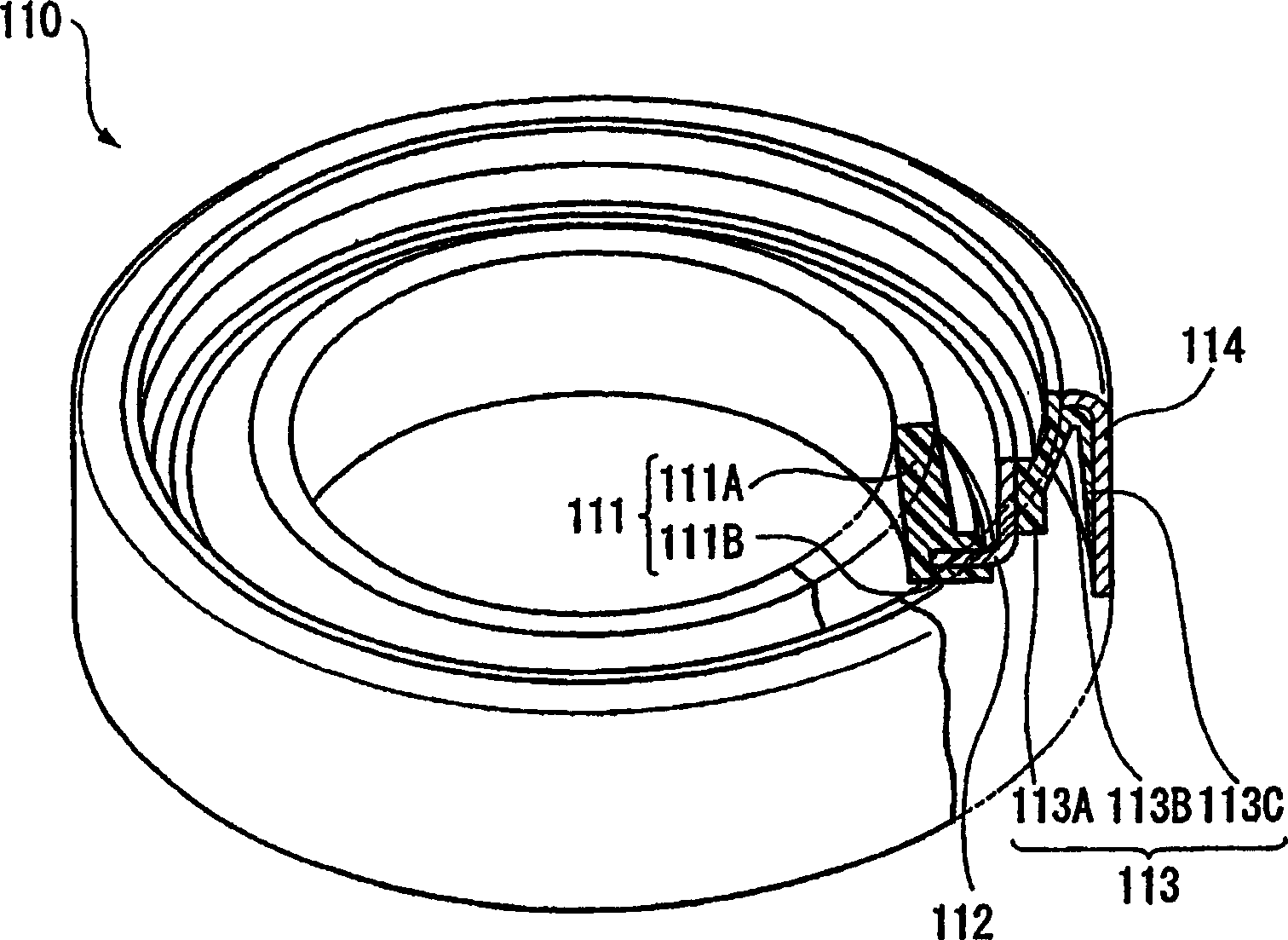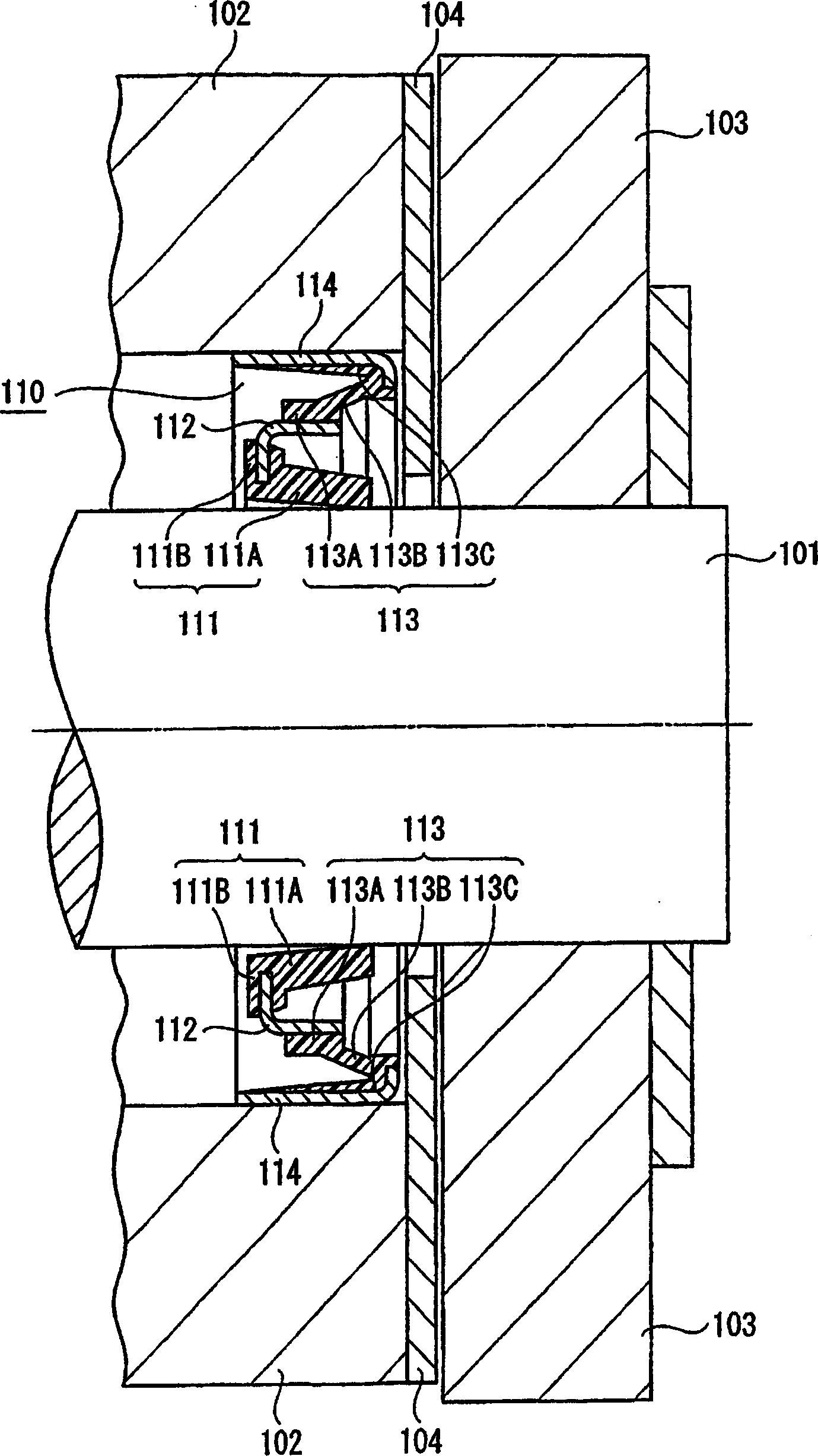Bearing seal and swing device
A technology for bearing sealing and rotating devices, which is applied to the sealing of bearing components, shafts and bearings, and engines. It can solve the problems of reduced sealing performance, reduced durability of pin connections, replenishment of lubricating oil, and leakage of butter to reduce friction. , The effect of preventing the deterioration of sealing performance
- Summary
- Abstract
- Description
- Claims
- Application Information
AI Technical Summary
Problems solved by technology
Method used
Image
Examples
no. 2 Embodiment approach
[0148] Next, a second embodiment of the present invention will be described. In addition, in the following description, the same reference numerals are used for the same members as those described above, and the description thereof will be omitted or simplified. In addition, in the cross-sectional views of the following embodiments, the right side will be described as the outer side of the rotating device, and the left side will be described as the inner side including the bearing portion.
[0149] In the first embodiment described above, the outer seal 113 is configured such that the telescopic portion 113B protrudes in a direction inclined relative to the inner ring fixing portion 113A and the outer ring fixing portion 113C. It is configured to absorb displacement with respect to the shaft portion 101 and the boss 102 .
[0150] On the other hand, in the bearing seal 120 of the second embodiment, as Figure 5 As shown, there is a difference in the configuration of the oute...
no. 3 Embodiment approach
[0155] In the above-mentioned first embodiment, the outer seal 113 of the bearing seal 110 includes the inner ring fixing portion 113A, the expansion and contraction portion 113B, and the outer ring fixing portion 113C, and is configured to expand and contract by tilting relative to the axial direction of the shaft portion 101 . The portion 113B absorbs the displacement of the shaft portion 101 .
[0156] On the other hand, in the bearing seal 130 of the third embodiment, as Figure 6 As shown, the difference is that the outer seal 133 protrudes in a direction perpendicular to the axial direction of the shaft portion 101 , and has a constricted section at the center, and the constricted portion becomes a stretchable portion.
[0157] Furthermore, the bearing seal 110 of the above-mentioned first embodiment is configured such that the outer ring 114 has a substantially L-shaped cross-section, but in the bearing seal 130 of the third embodiment, the outer ring 134 is formed alon...
no. 7 Embodiment approach
[0203] In the sixth embodiment described above, the inner ring 362 is arranged to be sandwiched between the inner seal 361 and the outer seal 113 .
[0204] On the other hand, in the bearing seal 370 of the seventh embodiment, as Figure 14 As shown, the difference is that the inner ring 372 as an annular rigid part is embedded in the base of the inner seal 371 and integrated therewith. Also, the inner seal 371 and the outer seal 113 are adhesively fixed between mutual bases.
[0205] According to such a bearing seal 370 of the seventh embodiment, in addition to the effects of the above-described embodiment, the following effects are obtained.
[0206] That is, since the inner ring 372 is buried and integrated in the inner seal 371 , when the radial displacement of the sleeve 102 relative to the shaft portion 101 occurs, the effect of restraining the radial displacement of the inner seal 371 is further enhanced.
PUM
 Login to View More
Login to View More Abstract
Description
Claims
Application Information
 Login to View More
Login to View More - R&D
- Intellectual Property
- Life Sciences
- Materials
- Tech Scout
- Unparalleled Data Quality
- Higher Quality Content
- 60% Fewer Hallucinations
Browse by: Latest US Patents, China's latest patents, Technical Efficacy Thesaurus, Application Domain, Technology Topic, Popular Technical Reports.
© 2025 PatSnap. All rights reserved.Legal|Privacy policy|Modern Slavery Act Transparency Statement|Sitemap|About US| Contact US: help@patsnap.com



